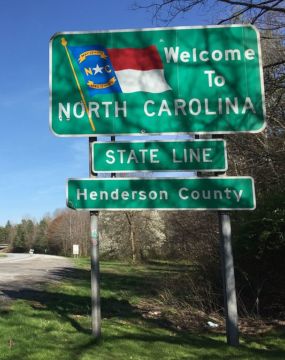Keep up with our latest demographic insights

A complete and accurate census count is incredibly important. The census shapes how billions of dollars in federal funding are distributed, how congressional seats are apportioned, and how communities plan for their future residents. But certain populations have historically been undercounted in the census, due to a variety of factors. Undercounting these communities skews the census data that’s used to ensure fair political representation and support community planning. To help North Carolina achieve a complete…

Yesterday’s post provided topline statistics about internet access in North Carolina. For many readers, this post raised more questions than it answered. Specifically, one reader wanted to know how many individuals had internet access only through their cell phones. Others had more specific questions about the relationship between income, geography, and access. These questions are addressable with the data and are the focus of this post. How many of the people with internet access are…



Nationally, 78% of all households subscribe to the internet. This rate is two percentage points lower in North Carolina—76%—reflecting generally lower internet access rates among households in rural and lower-income counties. These data come from the 2017 5-Year American Community Survey (ACS) estimates recently released by the U.S. Census Bureau, the first data to provide estimates of computer and internet use for all communities. Across North Carolina’s 100 counties, internet access varies widely. In twelve…



Just over 656,000 veterans lived in North Carolina in 2017 according to the most recent American Community Survey estimates. This is a decrease of 10,000 veterans from 2016, a decline of 1.5 percent. Nationally, the veteran population decreased at a similar rate, declining from 18.5 million in 2016 to 18.2 million in 2017, a loss of 292,000 on veterans. While the veteran population has been steadily declining, the total adult population continues to grow. As…



Just over 666,000 veterans lived in North Carolina in 2016 according to the most recent American Community Survey estimates. This is a decrease of roughly 15,000 veterans or -2.2% from 2013, the year we last profiled North Carolina’s veterans. Nationally, the veteran population decreased at an even faster rate over this time (-5.6%). The U.S. veteran population declined from 19.6 million in 2013 to 18.5 million in 2016, a loss of 1.1 million veterans. While…


Women’s History Month has its roots in various “Women’s History Week” celebrations dating back to the late 1970s. The commemoration was often anchored to the March 8th observance of International Women’s Day. As support for the celebration grew, Congress ultimately passed a resolution recognizing March 7, 1982 as “Women’s History Week”. In 1987, this event was expanded to the entire month in perpetuity. An annual Presidential Proclamation is now issued every March to recognize the…



The percentage of the state’s total population not born in North Carolina continues to rise. Recent estimates from the American Community Survey indicate that 43% of the overall population is non-native, up 1 percentage point from previous five-year estimates when this share was 42%. This share is even higher among the adult population. Nearly half of all individuals 18 and older were born somewhere else and this group has grown faster than the population overall.…


February marks the arrival of Black History Month, dedicated to celebrating the achievements of Black Americans throughout history. It began as a weeklong celebration in 1926, selected to correspond with the birthdays of Frederick Douglass on February 12th and Abraham Lincoln on February 14th. 50 years later, President Gerald Ford officially recognized the entire month for this commemoration. 2.2 million The total black or African-American population, alone, in North Carolina, as of 2016. This is…


New Geography recently reported on the extent of urban growth among the United States’ 53 major metropolitan areas (defined as having more than one million residents). Findings indicate that the majority of growth has taken place outside of the urban core, within the suburban and exurban regions of the metro area. North Carolina is home to two of these fifty-three major metropolitan areas: Charlotte and Raleigh. Using Wendell Cox’s City Sector Model, we explored the…



Migration is the main driver of North Carolina’s population growth. Three of every four new residents added to the state between July 1, 2016, and July 1, 2017, were from net migration, primarily from other states. (Note: individuals are classified as domestic or international migrants based on their country of prior residence, not on individual characteristics such as place of birth or citizenship status.) Between 2016 and 2017, the Census Bureau estimates that North Carolina…
Your support is critical to our mission of measuring, understanding, and predicting population change and its impact. Donate to Carolina Demography today.